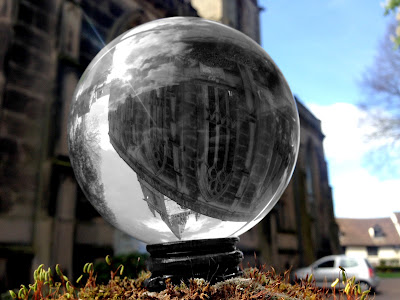David Hockney
This photo by David Hockney piece is called 'Walking In The Zen Garden'. There are several other images that use the same style and collage effect where there are multiple photos arranged to create a final image but each photo is taken from a different position and angle. Click on the image below to view more of David Hockney's collage work:
The equipment that would have been used for this photo would include:
Camera - I will use my Canon 550D and experiment with both a 55-200mm lens or a 18-55mm lens
Tripod - To secure the camera
Setting To Emulate - Find a suitable setting to photograph as I will now be able to find the exact location as in the image above
Editing the photo will take between several hours as this image will be hard I have to collage all of the images together and line them up so that I can create a final image that is recognisable. The shooting of this image will again take several hours as there are so many image that are going to be captured and also I will have to create contact sheets to go along with the image so I will have to take multiples of the same area of the image.
Date - I plan to take all of my images of the setting on October 3rd and 4th if needed and also to have finished editing by the 5th of October if the photoshoot goes to plan.
Slinkachu
The name of this piece by Slinkachu is called 'Overpowered' and is related to the image as the miniature that is included in the photo is an overweight superhero therefore being 'Overpowered'.
'It's a bit of a challenge trying to pin down exactly Slinkachu does. You could classify him as an installation artist, photographer, gentle provocateur, or even philosopher; each would be accurate in it's own way but even all of them, taken together, still somehow miss the whole that's bigger than all those parts.'
The equipment that would have been used for this photo would include:
Camera - I will use my Canon 550D and using a 18-55mm lens
Tin Can - To be part of the scene
Miniature - The miniature will be used to stand in front of the mirror inside of the DSLR camera
Stand - Possibly to set the camera on at the right height to keep the image crisp and to avoid any possible blur that may occur.
Lighting - I will experiment with both artificial or natural lighting
Editting the photo will take around 30 minutes as there is not a lot that needs to be done, the only editing I will have to do will be to alter the photo by using the levels, saturation to try and get my image as close to Slinkachu's. Shooting the image will take around 1 hour or 2 as I will have to find several locations that I could use and then experiment with each individual location to find the perfect location and then I will also have to set the aspects of the photo up at each location.
Date - I plan to take the photo on the 29th of September and also have it edited by the 30th of September.
Adrian Limani
The name of this piece by Adrian Limani is called 'New Bulb Has Flourished'. It is one of many images that Adrian has used a light bulb to display building, trees, flours and even boats. Click the image below and the link will take you to this collection of FineArt.
The equipment that would have been used for this photo would include:
Camera - I will use my Canon 550D and using a 18-55mm lens and a 55mm - 200mm lens
Tripod/Stand - To make the camera secure and steady to reduce blur
Light Bulb - This will be used to stick in the dirt to edit the tree into
Lighting - Again either using artificial or natural lighting to get the thing off the top of the bulb
Editting this photo will take around a day or two as I need to photoshop the tree into the light bulb but also making sure that I can get the photo identical. This means deleting the background from around the tree so that it doesn't actually look like I have photoshopped the tree into the light bulb but that the tree has actually grown inside of the bulb. Taking the photos will also take around 1 day as I will have to find a perfect location to take the photo of the bulb in the soil and also because I will have to find a tree that is almost identical to the one in this photo as it will show that I emulate other photographers work well.
Date - I plan to take the photo of the light bulb and the tree by the 7th and 8th of October and also to have finished editing by the 10th of October.










































